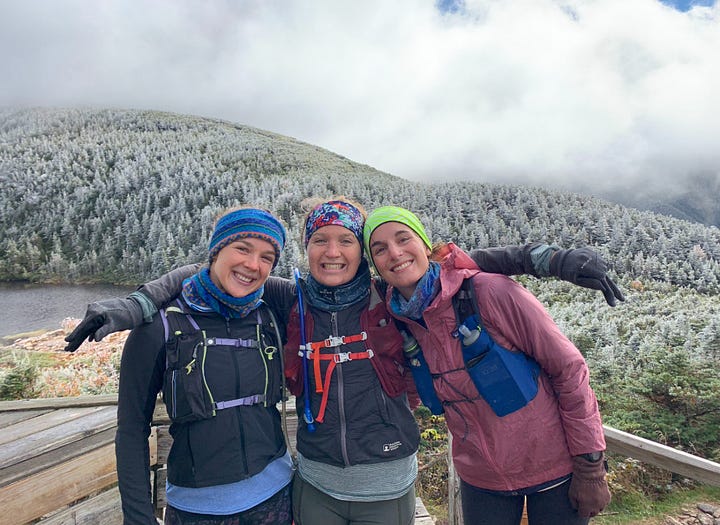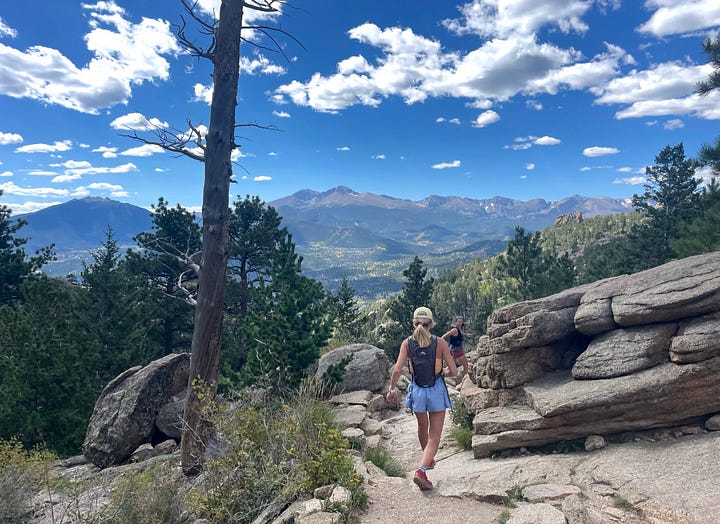Textiles in the Outdoors: The Role of Materials in Adventure, Comfort, Safety and Sustainability
In this post, Lauren talks about the importance of using the right materials for outdoor gear, and the value of creative, sustainable gear repair through sewing and patching.
Note: This post focuses on textiles and the repair of clothing and gear. I wanted to emphasize upfront: not everything can or should be fixed. Items like clothing, jackets, tents, and backpacks often can be repaired and given new life. But something like a carabiner? A climbing rope? A helmet? If it’s compromised, it’s time to replace it. Repair is an awesome tool and skill to have—but so is knowing when to retire something for safety’s sake. Plus, gear that’s not safe for adventure anymore can be reimagined and repurposed for something else in your day to day life. I’ve seen people weave retired climbing ropes into rugs, make old skis into chairs, or use damaged carabiners as key holders. Think creatively, and the possibilities are endless!!
There’s a famous saying in the outdoor industry: cotton kills. This is a very intense way of saying that not all materials are intended for outdoor recreation—especially materials like cotton. Take cotton vs. wool for example: when wet, these two materials react in two completely different ways; cotton holds water and loses all insulating properties, leaving the wearer unprotected, uncomfortable and cold. Wool on the other hand also holds water, but the insulating properties of the material are not compromised, leaving the wearer warm, safe and well-prepared.

Sewing is a huge part of my daily life. Currently, I am in a class, CPMG, to learn how to design size-inclusive sewing patterns. Alongside that, I’ve been diving deep into research on textiles: which materials look best, feel best, and function best based on the purpose and design. Through this, I’ve found myself inspired by a wide range of sewing and design—most prominently, everyday clothing and technical outdoor gear.
Everyday clothes like bags, pants, skirts, tops and so on, that are size-inclusive, functional, comfortable and unique are a big interest area for me. I love an elevated basic—pieces that look effortless but are still statements; think the Jill Wrap Skirt by Jessilous Closet or the Jackie Top by Sewing With Liliya. I also love a bold statement garment, like the newly released Junie Jumpsuit by Tiana Herring (very high up on my to-sew list!)
Gear and outdoor recreation clothing that are, again, size-inclusive, functional, comfortable and fun. The next pattern on my to-sew list is one I have been waiting for forever: the Cedar Pant by Leila Makes. This pattern is gender neutral, size-inclusive and just so cool - Leila is a CONSTANT source of design and style inspiration for me—she also just built her own sauna which was so cool to follow along with on instagram. Adrienne, new summer project for you?
Another constant source of inspiration for me is Tim at LearnMYOG. He does an incredible job designing gear and outdoor staples that are both functional and cool. Next two on my to-sew list from him are the trail running pack and the porter duffle - I have never made gear like this before, so wish me luck and follow along @deirla.patterns !! (PS. My most-worn me-made garment ever is one of Tim’s designs—the Alpha Raglan Hoodie. I pretty much live in it, and it’s beginner friendly. Give it a go!)


Textiles play a major role in how all garments function and feel, but this is especially true for clothing made for the outdoors. The right materials can be the difference between a miserable or a magical rain hike. Wool, fleece, and synthetic moisture-wicking fabrics all excel in wet, hot or cold conditions—but they’re often expensive and sometimes tricky to source or replace, even if you’re sewing it yourself.
With adventure comes broken gear and torn clothing; especially for us clumsy folk that somehow trip over nothing. So what happens when our gear breaks down? When our favorite base layer rips, or the tent gets a hole?
This is where sewing and repair come in.
Extending the life of outdoor clothing and gear is practical, empowering, sustainable and creative. Repairing clothing is not only caring for what cares for us, but it’s also sustainable for our planet and our wallets. It’s a chance to get creative (why not patch your climbing pants with purple polka dot fabric!?) and to deepen your understanding of how your gear works. Learning to patch, stitch, or reinforce gear extends its life and keeps functional textiles out of the landfill and in our adventures.
In my mind, I picture a triad of repair—three main categories that most forms of repair fall into: sewing, darning, and patching.
So: how do you start if you’ve never sewn, don’t know how to knit, and aren’t totally sure what patching is? GREAT question. For smaller tears in many synthetic materials (think nylon, polyester, vinyl, etc.), the solution is often a stick-on or iron-on patch—or gear tape. All you need is scissors, your patch of choice, and rubbing alcohol. It’s as simple as this:
Clean and dry the tear
Trim away any loose threads and push insulating back in if needed
Cut the patch so it is 1” larger on all sides to the tear
Apply. Voila! You’ve patched your jacket, sleeping bag, tent or pack!
For larger tears or rips—like torn seams—sewing and/or patching with similar materials is often the best solution. So what is patching, if it's not the peel-and-stick kind? Patching is repairing clothing by covering the tear or hole with a piece of material similar to that of the garment, and sewing it into place. It’s a fun and creative process because you get to choose a new fabric to incorporate into your gear. Get funky with it—add color, do some decorative stitching, make it yours.
Hand or Machine Sewing, in this context, are similar—but instead of adding a patch, you're just rejoining two pieces of fabric, like in the case of a torn seam. Whether you’re mending a jacket seam or sewing your first running shorts, don’t be intimidated. Start small. Invest in high-quality thread (I recommend Gütermann or Mettler—check out your local sewing store or thrift shop) and a good needle. Bring patience, curiosity, and a willingness to learn something new. Watch videos, ask questions, make mistakes. Every repair is practice and mistakes are a big part of learning.
Darning is the last piece in the repair triangle—but unfortunately, I have no idea how to knit (yet). HOWEVER - If I learn, I will report back. In the meantime, turn to YouTube. There are tons of incredible teachers out there who care just as much about repair and saving textiles as we do, and they’re more than happy to share their knowledge.
To make a long story short: Textiles serve many important purposes in the outdoors: comfort, sustainability, safety, expression. And repair is a creative, sustainable choice that allows our gear to keep telling the story of where we’ve been. So, patch things up and get back out there!
Thank you for being part of this community.
Let’s get outside, let’s get creative, let’s venture to the outskirts!








I’ve been on the fence about purchasing the Alpha Raglan pattern… so I’m taking this as a sign!